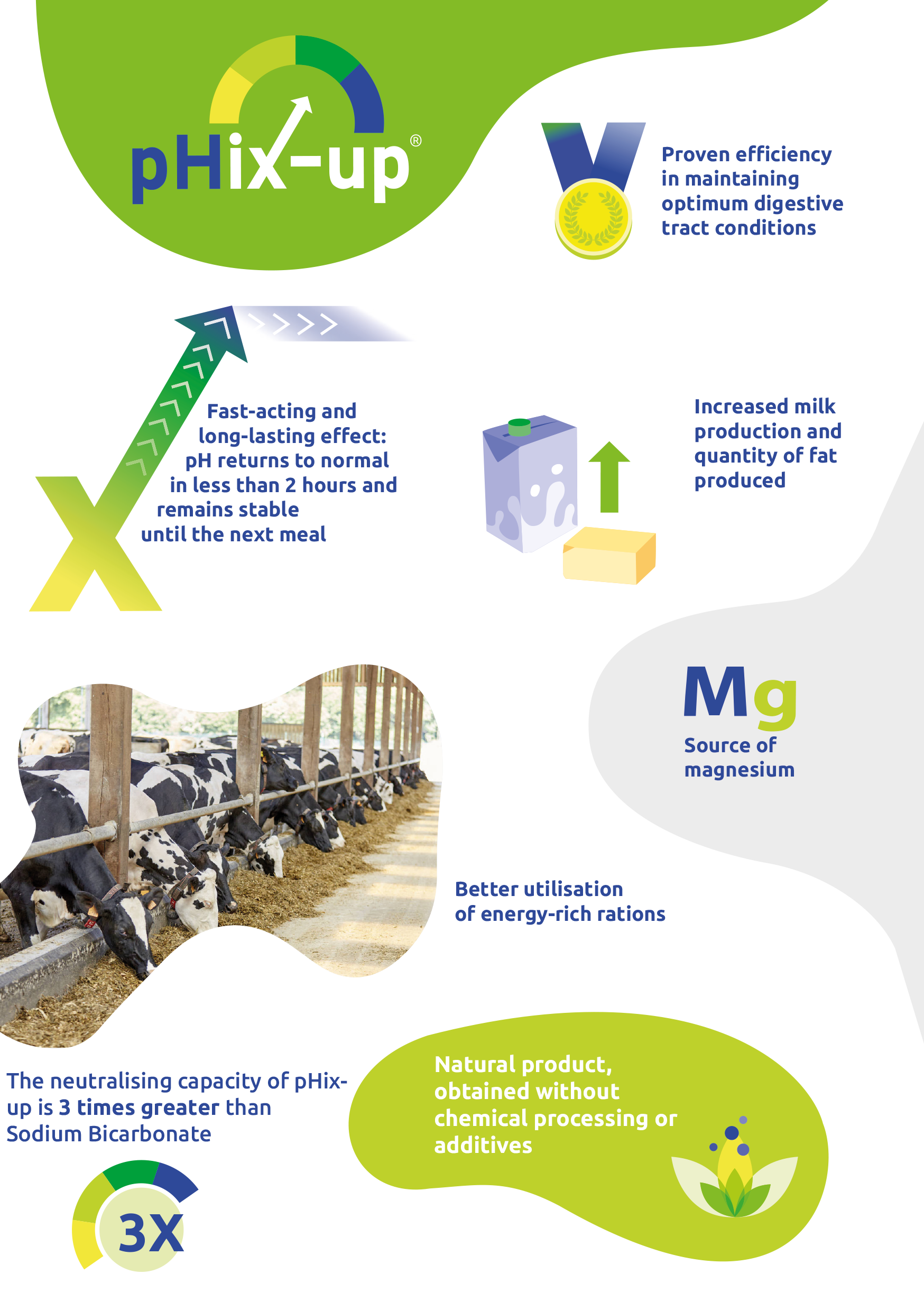Balancing the ration to optimise rumen health
- 9 Sep 2021
- 0 Comments

Changes in the ration such as moving from silage to fresh grazed grass this spring, or changing between different cuts/clamps of silage, can have a detrimental effect on rumen health if not appropriately balanced. This is due to the variation in nutrients and dry matter between forages, and poses a challenge to every farmer and nutritionist, to try and avoid any negative effect on milk quality or yield.
In the spring it is typical to experience lower milk butterfat levels, or even butterfat depression (>0.3% drop) when grazing lush grass, so below are some feed product options to help alleviate this.
Is it worth considering a yeast supplement?
It is worth considering a yeast supplement to support the rumen microbial population and improve digestion of the fibre in silage, therefore improve butterfats. Buffers such as pHix-up, provide highly bioavailable forms of magnesium. This means more is available to the cow, and you see a subsequent performance response over other buffers, with a lift in butterfat and then protein percentage. The quality and bioavailability of any mineral supplement is impacted by the source, the processing, and whether it is organic or chelated.
Supporting rumen health during ration changes
Grass staggers is well known to be caused by a lack of Magnesium in spring grass, but did you know Magnesium can also contribute to milk butterfat levels? Buffers such as pHix-up, provide highly bioavailable forms of magnesium. This means more is available to the cow, and you see a subsequent performance response over other buffers, with a lift in butterfat and then protein percentage. The quality and bioavailability of any mineral supplement is impacted by the source, the processing, and whether it is organic or chelated.
In pHix-up, the magnesium is over 75% bioavailable, almost twice as high as most other standard Cal-Mag Magnesium sources. Its inclusion will support rumen health during ration changes, such as moving from housed to grazing, or changes in silage pits, which will drive butterfat percentages up and maintain high milk yields.
Lush early cut silage, with high lactic acid levels, above 70g/kg, can also cause rumen health issues, so pHix-up can play a role here too. Look out for loose muck, cud-balls, and reduced butterfat levels, which could all be signs of SARA (acidosis) - a costly problem for any farmer.
Consider by-pass protein
For those who are housed year round and on silage, which has shown to be variable and generally poorer on protein levels this year, to those grazing grass with a high level of rumen-degradable-protein, consideration should be given to the total Metabolisable protein available to the cow and in particular the level of quality by-pass protein (DUP). This will drive the milk yield.
There is considerable volatility in protein sources regarding price, availability, sustainability, and environmental pressures. To remain cost-effective, it’s important to consider a balanced diet and the price of the overall ration in relation to what milk yield it can support, rather than the price of individual raw materials or compound feed. When considering protein efficiency, nutritionists must also look to ensure there’s adequate bypass protein, sufficient rumen degradable protein, and balance for amino acids, without supplying in excess which could be indicated in high milk ureas (>250mg/L).









